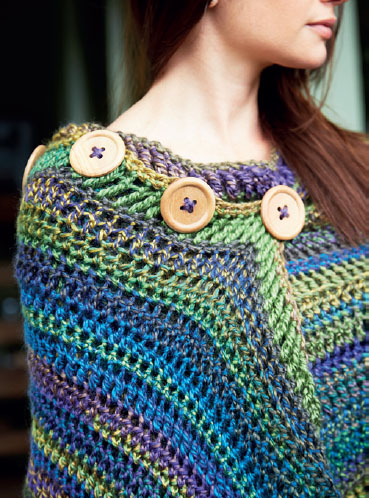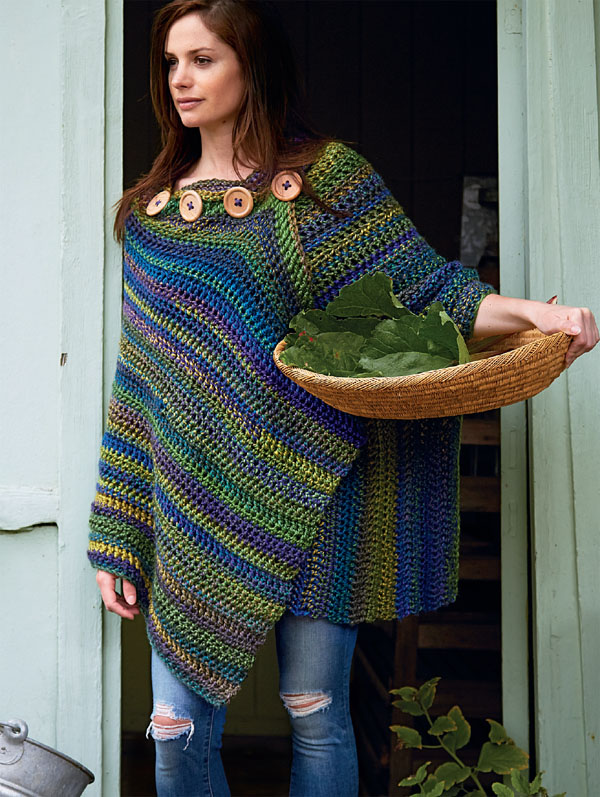Wrap yourself up and beat the chills with this oversized rectangular shawl. The simple design uses only five different stitches making it ideal for beginners, and worked on a large hook you’ll be finished in no time! Large feature buttons keep it secure around your shoulders.

MATERIALS
• Lion Brand Unique (100% acrylic; 100m/109yds per 100g/3½oz ball) chunky-weight yarn
11 x 100g (3½oz) balls of shade 202 Oceania
• 9mm (US M/13) crochet hook
• Locking stitch markers or safety pins for button placement
• 4 x 5cm (2in) wooden buttons
• Tapestry needle
FINISHED MEASUREMENTS
76.5cm (30in) wide x 216cm (85in) long
TENSION
8tr and 4 rows to measure 10cm (4in)
ABBREVIATIONS
See page 9.
FOR THE SHAWL
Foundation: Using 9mm (US M/13) hook, make 171ch. 1dc in second ch from hook, 1dc in each ch to end, turn. (170 sts)
Row 1: 2ch (counts as 1htr), 1htr in each st to end, turn.
Row 2: 3ch (counts as 1tr), 1tr in each st to end, turn.
Row 3: 1ch (does not count as st), 1dc in each st to end, turn.
Row 4: 2ch (counts as 1htr), 1htr in each st to end, turn.
Row 5: 3ch (counts as 1tr), 1tr in each st to end, turn.
Rows 3–5 set the pattern.
Continue as set working repeats of Rows 3–5 for a further 33 rows (39 rows worked in total including foundation row).
FOR THE BUTTONHOLE BAND
Row 41: 4ch (counts as 1dtr), 1dtr in each st to end, turn.
Row 42: 1ch, 1dc in each st to end. Fasten off.
MAKING UP AND FINISHING
Weave in all loose ends and block to measurements.
Wrap the shawl around yourself and decide on placement of the buttons (see Tips) then stitch securely in place.

Make it yours
This cosy shawl is created using a repeated pattern of three rows of stitches. Create different looks by working in stripes of solid colours or combine a solid with a variegated yarn.
Tips
The buttons are fastened through the holes created in the row of double treble stitches, so once you’ve decided on the placement of the buttons you can fasten it however you like. Wrap the shawl around you to decide on button placement and place a locking stitch marker to indicate where to stitch the button.
Y
Ensure the buttons are small enough to fit through the rows of double treble stitches, but not so small that they slip back through!
